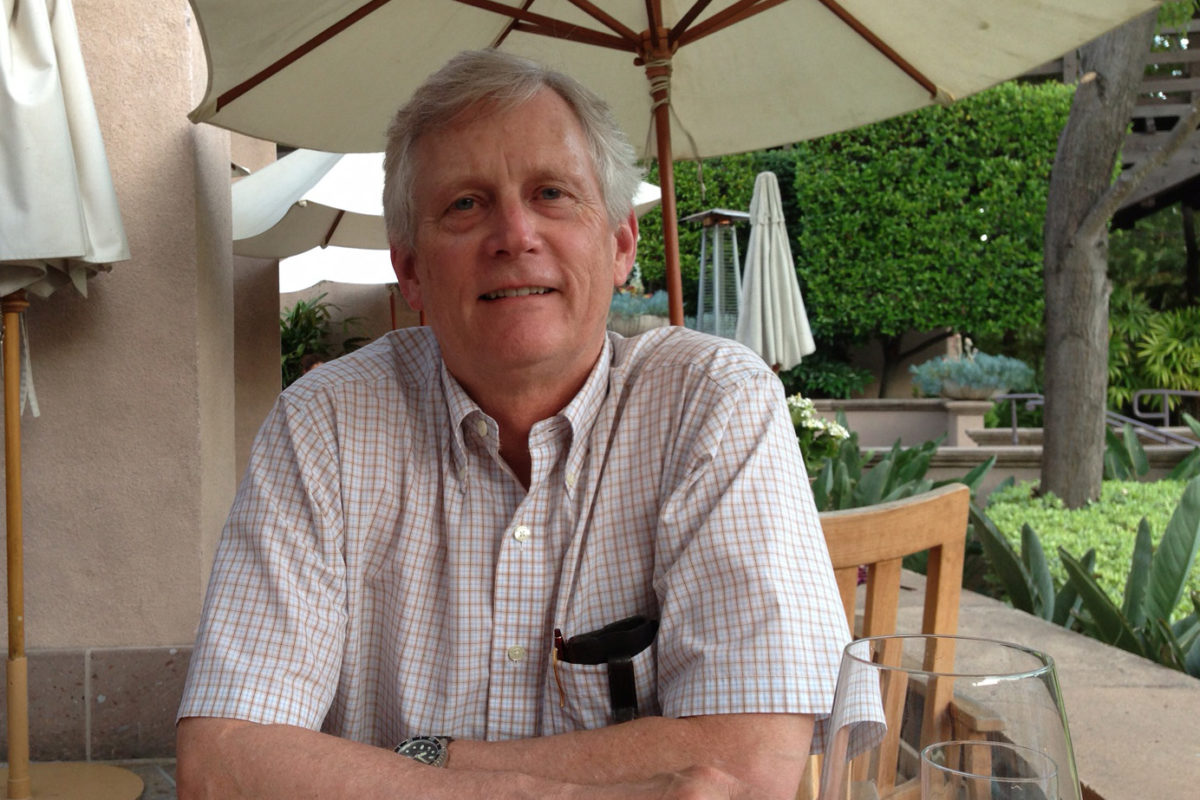
USC Emeritus Professor Robert E. Maxson has an understated explanation for why he’s flown so many planes, sailed so many boats, skied so many mountains, played so many guitars, taken so many trips to Antarctica, and studied so many different aspects of developmental biology.
“I’m drawn to things that take all my attention, and things that are demanding in a fun way,” said Maxson, Emeritus Professor of Biochemistry and Molecular Medicine, and Stem Cell Biology and Regenerative Medicine at USC, and recipient of the 2021 USC Faculty Lifetime Achievement Award.
Maxson isn’t the first person in his family to excel at fun, demanding pursuits: he’s the son of two professional ice skaters who traveled around the United States and Canada performing in the Ice Capades.
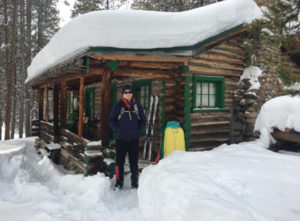
Maxson was often on the road with his parents, and also spent time at his grandmother’s house in Colorado Springs, or at his grandfather’s fishing cabin near Leadville. Colorado eventually became a more permanent home when he was seven years old, and his parents retired from the Ice Capades, only to later join the production team of the Ice Follies.
“We had a normal suburban life,” said Maxson. “We lived in a place that was literally a half a block from a pasture that turned into the front range of the Rockies, and I would spend a lot of time hiking, walking around and then up in the mountains. My mother would say, ‘Oh, just go up there, and don’t step on any rattlesnakes.’ She was from Texas, and had this Texas pioneer legacy approach to things, and was very self-reliant, and she instilled that in me.”
A natural athlete, he played baseball, speed skated and skied. Despite these healthy doses of fresh air, Maxson was also what he considers a “weird, nerdy kid.” As a sixth grader, he convinced his parents to sign him up with a retired Latin and Greek teacher so he could learn to read classical literature in its untranslated glory. At the same time, he had an engineer’s enthusiasm for rockets.
During the summers, Maxson would relocate to the Bay Area with his parents while the Ice Follies rehearsed at the legendary Winterland Ballroom in downtown San Francisco. It was during one of these summers that Maxson began sailing a small boat up and down the San Rafael Canal.
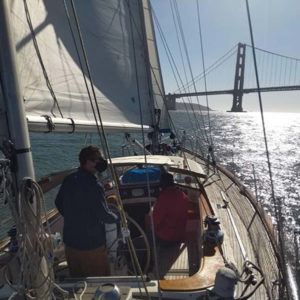
“There’s a quote to the effect that there’s nothing so wonderful as messing about in boats,” said Maxson. “And even when you don’t sail, there’s always something to be fixed and something to make better—some re-rigging or whatever. So I just love messing about in boats.”
His summers in the Bay Area also introduced him to the University of California, Berkeley, where he earned his bachelor’s degree in 1973. Although he began college as a chemistry major, he ended up as a zoology major because, as he explained, it gave him “the greatest freedom to take different kinds of biology—everything from natural history to hardcore biochemistry.”
As a senior, he joined the research laboratory of Shyamala Harris, who was studying steroid hormones in breast cancer. Harris’ two children—Maya and future U.S. Vice President Kamala—would often tag along and work on their coloring books in the lab.
A self-proclaimed “dilettante,” Maxson also delved into non-scientific subjects, including enough English and writing courses to nearly declare a minor.
“I met my future wife in English 1A,” he said. “We had a weird romance. We were together for three years in college, and then we broke up. And then about 15 years ago, we got back together. We married other people and had kids, and then both of us were divorced, and we reconnected. It’s been great.”
Maxson had so much fun at Berkeley that he stayed there to pursue his PhD in cell and developmental biology in the laboratory of Fred Wilt, who studied early development in sea urchins. While he was still in graduate school, he and a postdoc in a neighboring lab bought a small boat that they sailed in San Francisco Bay and offshore, eventually making a trip to Mexico and back.
He did his postdoctoral training in the genetics laboratory of Larry Kedes at the Stanford University School of Medicine. True to form, Maxson found time to join the Stanford Flying Club, obtain his pilot’s license, and enroll in an aerobatics course taught by a former member of the Swedish Air Force. Eventually, he had an opportunity to purchase his own small airplane.
“It’s a 66 Beechcraft,” said Maxson, who regularly used his plane to commute to USC from Napa, where he lives with his wife Peggy. “It’s a very spiffy airplane.”
Follow the Sea Urchins
In 1983, Maxson began his 37 years as a faculty member at the Keck School of Medicine of USC.
“There was a sense that it was nascent, that there was a lot about to happen,” he said. “The Cancer Center was just developing when I interviewed for the job. They gave me a hard hat, and we walked through the steel girders. It was growing, and a cohort of people all came in at the same time. We knew each other’s kids, and we watched each other’s kids grow up, and we grew up scientifically together.”
As one of USC’s first developmental biologists, Maxson spent the first decade of his career studying sea urchins. Specifically, he looked at genes encoding proteins called histones, which serve as “spools” for storing long strands of DNA. These strands remain in storage, tightly wrapped around the histones, until they’re ready to unwind and actively send instructions to the body’s protein-making machinery. Sea urchins have two major sets of histone gene, one active early in development and the other late. The focus of Maxson’s lab was how the transition from an early-expressed set to the late-expressed set was regulated.
In the early 1990s, Maxson’s curious and collaborative spirit led him into an entirely new realm of research. He lent his genetics expertise to a large NIH-funded collaboration focused on skull development and birth defects, and quickly became an internationally recognized leader in the craniofacial field.
Maxson easily saw similarities between developmental processes in the sea urchin and in the mammalian skull. In both cases, the “epithelial” cells that line the body’s surfaces communicate with more stem cell-like cells, known as “mesenchyme,” to drive the process of development.
“I knew nothing about craniofacial development per se, but I knew about epithelial mesenchymal interactions and basic developmental biology,” he said. “And in some sense, there’s really no difference between craniofacial and any other tissue in which tissue interactions are driving the development—so the ear, the eye, the kidney. There are many similarities. And I’d been taught that early on. So I thought, ‘Well, okay, I can do this.’ ”
In collaboration with human geneticist Andrew Wilkie at the University of Oxford, Maxson used lab mice with mutations in two genes—MSX2 and TCF12—to model a serious birth defect known as craniosynostosis, which affects 1 in 2,500 infants in the U.S. In craniosynostosis, the places where the skull plates meet, known as sutures, prematurely fuse, impeding the growth of the brain and necessitating risky corrective surgeries.
“Rob’s discovery of a causative missense mutation in the MSX2 homeobox protein certainly ignited the field, demonstrating the type of molecule and signaling pathway that, when mutated, could give rise to craniosynostosis,” said Wilkie. “This was previously totally unknown.”
Yang Chai, director of USC’s Center for Craniofacial Molecular Biology, recently succeeded in using a stem cell-infused gel to encourage the regeneration of parts of the skull and mitigate neurocognitive damage in young mice with craniosynostosis. He emphasizes the importance of Maxson’s work in modeling this disease in mice.
“The creation of an animal model for a human disease is a powerful tool for our research into disease etiology, treatment, and ultimately prevention,” said Chai. “Both mouse models are still extensively used today, including in my own laboratory.”
The Ends of the Earth
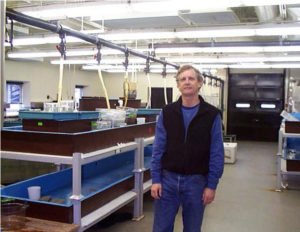
In 2001, Maxson trimmed his sails once again and headed to Antarctica to study how sea urchins adapt to harsh conditions. In collaboration with faculty members Donal Manahan at USC and Adam Marsh at the University of Delaware, he discovered that Antarctic sea urchin larvae use very little energy to synthesize proteins, allowing them to live for as long as five years without food.
“It turned out that it’s a lot less energy than any other cell that’s been described by a substantial amount, and that was a major new finding,” said Maxson. “So we were lucky enough to publish that in Science.”
While on the Earth’s southernmost continent, he also began teaching in an international graduate training course, “Integrative Biology and Adaptation of Antarctic Marine Organisms,” organized by Manahan. This course was dedicated to studying life in extreme environments and was funded by the National Science Foundation (NSF).
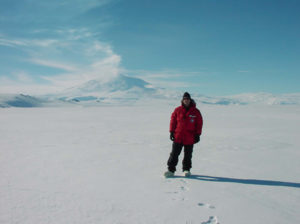
“Rob was a master teacher in these NSF training programs, bringing an intellectual rigor in molecular and cell biological approaches to understanding adaptations to life in extreme-cold environments,” said Manahan, the professor of biological sciences at the USC Dornsife College of Letters, Arts and Sciences who ran the program. “Some of the early indications of the impact of global climate change on life on Earth were first noted in polar regions, and Rob helped train the next generation of researchers to address the mechanistic bases of defining biological limits to respond to environmental change.”
Maxson calls his seven trips to Antarctica “an amazing experience like nothing I’ve ever done.” He stayed in the McMurdo Research Station, first when it was still under the control of the U.S. Navy, and later when it was run by the NSF.
“NSF hires world-class mountaineers to come down and run a training program,” said Maxson. “So before you can do anything in the field, you have to go out and usually end up having to spend the night on the ice to simulate a survival situation. They teach you crevasse rescue and how to travel across the ice and how to construct a snow shelter and all kinds of stuff.”
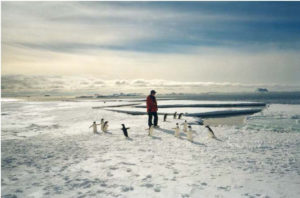
On a volcanic island in a frozen sea next to an ice shelf, Maxson reveled in Antarctica’s unique biology and spent countless hours on the sea ice while his graduate students scuba dived for sea urchins and other biological samples.
“The scuba diving is extreme and leaves no margin for error,” said Maxson. “The low temperatures require dry suits and thick long underwear, and there are hazards such as Weddell Seals that will decide that they like your ice hole. And they’ll actually come up, and they’ll defend the hole. So if you’re a diver, and one of these seals happens to do that, you’re out of luck. You’re not going to be able to get out of that hole. It’s not common, but it’s enough of a worry that they always drill two holes.”
Happy to Help
Back on USC’s Health Sciences Campus, Maxson played a major role in building the university’s thriving stem cell research community, and establishing its strength in craniofacial biology.
Early on, Maxson recognized the broader potential of genetic engineering to create models of human disease in mice. He also knew that very few laboratories had the expertise to create these transgenic mice without support from a shared research facility.
In 1993, he became the director of a Transgenic Mouse Core dedicated to helping laboratories across the university access these cutting-edge technologies.
“It’s much easier to just get on with your own work and not do things, but the community comes together around people like Rob offering to actually go beyond what they need to do to help others and create things like the effective transformational core facility that he generated,” said Andy McMahon, director of the Eli and Edythe Broad Center for Regenerative Medicine and Stem Cell Research at USC. “And institutions rely upon people who will go the extra yard, and they don’t do it for anything other than thinking that their job, as a good citizen and scientist, is to help others.”
McMahon, who also chairs USC’s Department of Stem Cell Biology and Regenerative Medicine, still recalls a debt of gratitude that he incurred in 1983, shortly after Maxson joined the faculty of USC.
“I was a postdoctoral fellow in Eric Davidson’s lab at Caltech,” said McMahon. “And what I was trying to do there was to understand gene regulation in sea urchins, and the approach I was taking was to try and make transgenic sea urchins. He showed me [a technique for injecting DNA] that changed my whole postdoc. And what I remember very vividly about that is that he instantly responded, he was extremely helpful, his advice was extremely well thought out. And literally the very first time I did the experiments the way he suggested, then it was working.”
When Professor Qi-Long Ying joined USC in 2006, he worked with Maxson and the Transgenic Core to pioneer some of the world’s first “knockout” rats, modified to lack one or more genes.
“After two years of hard work, we succeeded in establishing, for the first time, authentic rat embryonic stem cells,” said Ying, a professor of stem cell biology and regenerative medicine at USC. “Following the establishment of rat embryonic stem cells, my lab worked with Rob and his team at the USC Transgenic Core to explore the power of genetic modification in rats and generated the first gene knockout rats using embryonic stem cell-based gene-targeting technology. This work, published in Nature in 2010, marked the first success after 20 years of efforts around the world to achieve this goal and was selected by Science magazine as one of the top 10 scientific breakthroughs of 2010. Without Rob’s guidance and support, these projects would not have gone so smoothly and been successful.”
Maxson also served as an exceptionally helpful colleague to Gage Crump, a professor of stem cell biology and regenerative medicine at USC.
“When I got to USC, he was definitely one of my primary mentors who assisted me a lot and getting going and getting my first grants,” said Crump. “And then going from there, we became more collaborators when we got a joint graduate student, Camilla Teng, and so we really started doing comparative zebrafish/mouse studies.”
Of course, Maxson’s influence on his USC colleagues extends far beyond science. Professor Malcolm Snead credits Maxson with not only being a generous academic peer, but also his inspiration for becoming a pilot.
“He actually helped me get started in flying with the joke that it would only take me about 30 hours to learn how to fly and then about 10 percent of my income to keep flying,” said Snead, chair of the Division of Biomedical Sciences at the Ostrow School of Dentistry of USC. “You’d have to say that I love Rob, and for reasons that are just based in his humanity first, and his stellar ability to be a scientist. The reason I think Rob won this award is because of that outstanding capacity to contribute to other people’s projects.”
In his own laboratory, Maxson enjoyed a reputation as an exceptional advisor for his graduate students and postdoctoral trainees, and received a distinguished Mentoring Award from USC in 2016.
One of his early PhD students, Amy Merrill-Brugger, is now a tenured associate professor at the Ostrow School.
“The easiest thing for a mentor to do is jump in and just fix it for you,” said Merrill-Brugger. “But instead, he allowed us to learn, and in that, he prepared me personally for the winding path of scientific research, which can be full of setbacks and failures, but also unexpected results that are exciting and lead to important discoveries. And so his greatest gift to me, as a mentor to a mentee, was preparing me for that journey. And I do look to him not only for scientific advice, but also as a model of how I should mentor my trainees.”
More recently, Maxson served as a co-mentor for D’Juan Farmer, a postdoctoral fellow in the Crump Lab who is on the cusp of launching his faculty career with a focus on craniosynostosis.
“Rob is very supportive, and he’s particularly a really great historian of developmental biology,” said Farmer. “I lean on that a lot, because there’s so much of old literature that is super interesting that hasn’t been followed up on, and he usually has a good handle on those things.”
Maxson launched many other future scientists by taking the lead in creating a training program in stem cell biology for graduate students and postdoctoral and clinical fellows at the Keck School, supported by more than $8 million from the California Institute for Regenerative Medicine (CIRM). Thanks to this training program that began in 2006, USC offered its first courses in stem cell and developmental biology, as well as an annual retreat and weekly seminars for PhD students and postdoctoral trainees. Eventually, these educational offerings coalesced into USC’s PhD Program in Development, Stem Cells and Regenerative Medicine.
Maxson also served the broader academic community as the Co-chair in 2010 and the Chair in 2012 of the Gordon Conference in Craniofacial Morphogenesis, the leading meeting in the field. During the closing celebration, he always entertained his fellow scientists as the guitarist for the conference band, the Squawking Heads—since he’s also an amateur musician with a passion for flatpicking, bluegrass, and 60s rock.
Although Maxson’s colleagues are quick to describe him as “humble,” “non-flashy” and “low-key,” his solid contributions as a scientist, educator, and good academic citizen have often placed him in the spotlight. He received a USC University Scholar Award in 1986 and was elected as a Fellow of the American Association for the Advancement of Science in 2013, in addition to his most recent accolade of the USC Faculty Lifetime Achievement Award, which he will receive at USC’s 40th Annual Academic Honors Convocation via Zoom on April 12.
“I feel honored on the one hand, but why me?” said Maxson. “Why not this person or that person? I mean, we should all get lifetime achievement awards, because if you talk to pretty much anybody about what they did in their career, you’d probably get a similar story. Maybe mine is a little more extreme, just in the number of different things I’ve been able to do.”
